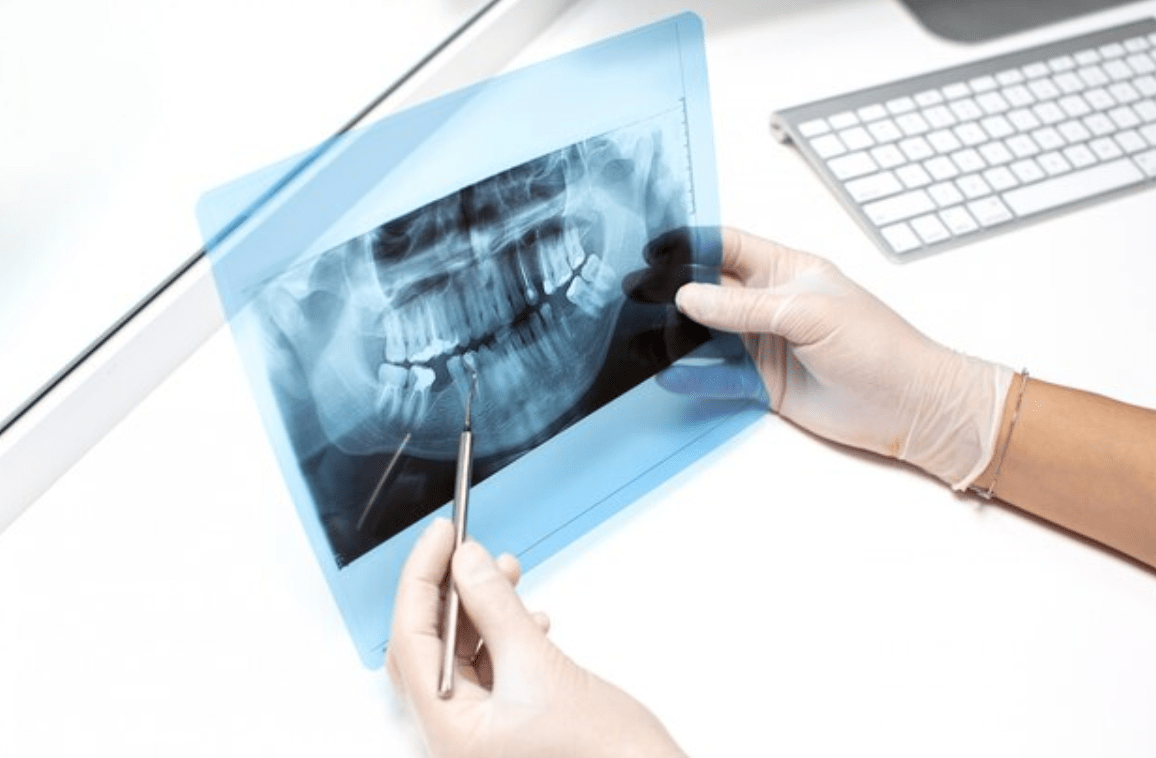Dental radiology has enabled dentists to treat on a professional lines. There are several types of dental radiology to choose from, and these modes of treatment are very useful.
Dental radiographs, or X-rays, are used to diagnose and treat dental problems. There are two broad categories of dental radiographs: intra-oral as well as extra-oral. Intra-oral radiographs are taken with the film inside one’s mouth, while extra-oral radiographs are taken with the film outside the mouth.
Few common types of dental radiology and their benefits:
Bitewing Radiographs: These happen to be routine screening radiographs that do help identify caries that may not really be clinically detectable, such as interproximal caries or recurrent caries. They can also, in fact, allow us to look at bone levels in patients.
Periapical Radiographs: These radiographs are used to assess specific teeth and also provide more detail of structures around particular teeth. They are able to help assess for the presence of periapical infection associated with a tooth, which tends to present as a radiolucent area.
Occlusal Radiographs: These views are indeed useful for localizing ectopic or impacted teeth and also identifying pathology, including cysts with bucco-lingual expansion.
Types of radiographic techniques used in dentistry?
Bitewing Radiographs
These radiographs are rather routine screening radiographs taken on patients. One bitewing is taken for each side in order to assess the posterior teeth. These are usually done in a horizontal manner, yet they can also be done vertically to gain more information.
- Caries assessment: can also help identify caries that are not clinically detectable, like interproximal caries or recurrent caries.
- Bone assessment: they can allow people to look at bone levels in patients, typically healthy levels or with early bone loss.
Periapical Radiographs
Periapical radiographs are usually used to assess specific teeth. They do provide more detail about structures around particular teeth.
- Assessment of periapical pathology.
- Endodontic treatment.
- Periodontal disease.
- Ctopic teeth.
- Assessment of root morphology.
Occlusal Radiographs
These can either be maxillary, or perhaps upper occlusals, or mandibular, lower occlusals. For this sort of radiograph, the x-ray film is placed horizontally between the teeth.

These views are useful for:
- Localization of ectopic or impacted teeth.
- Identification of salivary calculi.
- Identification of pathology.
- Identification of foreign bodies.
Extra-oral dental radiographs
Panoramic Radiographs (OPT/DPT/OPG)
This view is taken with a machine that tends to rotate around the patient’s head. They do provide an overview of the dentition as well as the surrounding anatomy. They do not provide the detail that a periapical or bitewing can provide a person, but they do give an overall view. Home Radiography Types of Dental Radiographs and Their Uses
There are indeed a variety of dental radiographs, or x-rays. Dental radiographs can broadly be divided into two categories:
- Intra-oral- whereby the x-ray film is inside one’s mouth.
- Extra-oral- where the x-ray film is outside the mouth.
Intra-oral dental radiographs
Bitewing Radiographs
These radiographs involve routine screening radiographs that are taken on patients.
Periapical radiographs are used to assess specific teeth. They provide you with more detail about the structures around particular teeth.
Periapical radiographs are used for numerous reasons:
- Assessment of periapical pathology
- Endodontic treatment.
- Periodontal disease.
- Ectopic teeth.
- Assessment of root morphology
Occlusal Radiographs
These can either be maxillary or upper occlusals, or even mandibular or lower occlusals.
For this sort of radiograph, the x-ray film is placed horizontally between the teeth.
These views are useful for:
- Localization of ectopic or even impacted teeth.
- Identification of salivary calculi.
- Identification of pathology, including cysts having buccolingual expansion.
- Identification of foreign bodies.
Conclusion
Dental radiology is sophisticated and very useful to treat patients.


